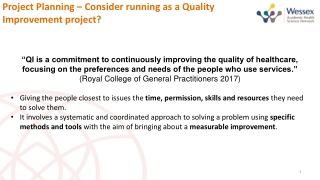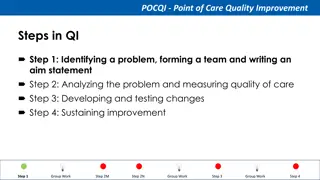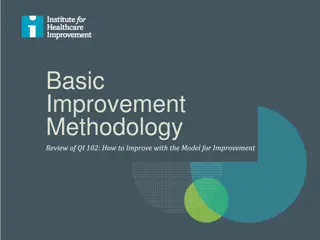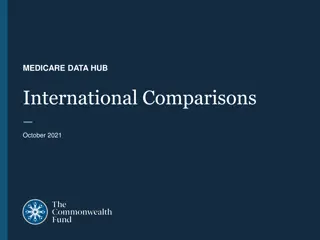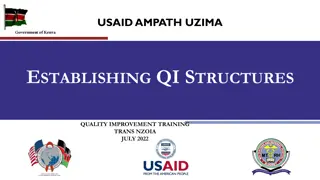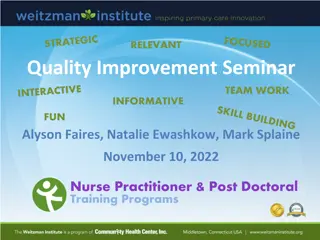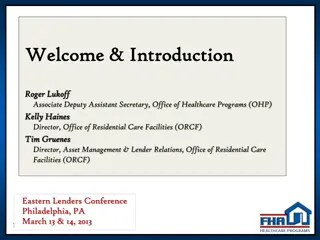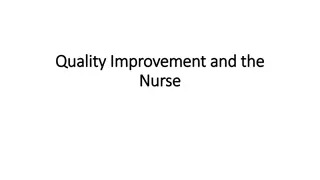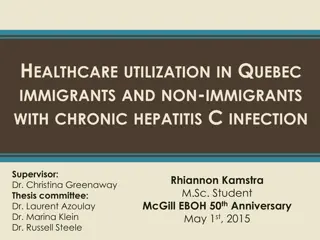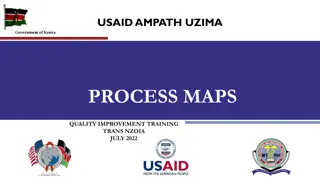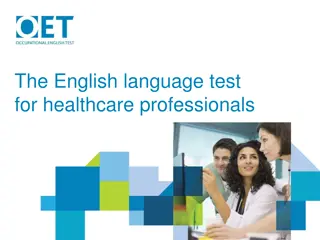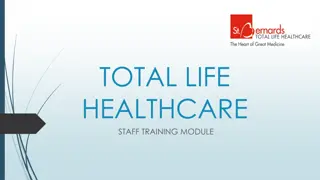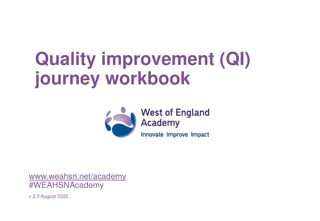Importance of Clinical Documentation Improvement Programs in Healthcare
Clinical Documentation Improvement Programs play a crucial role in ensuring accurate medical records, supporting diagnosis and care necessity, complying with guidelines, and enhancing reimbursement. Effective documentation impacts patient outcomes, length of stay, severity of illness, and overall quality of healthcare services provided.
Download Presentation

Please find below an Image/Link to download the presentation.
The content on the website is provided AS IS for your information and personal use only. It may not be sold, licensed, or shared on other websites without obtaining consent from the author. Download presentation by click this link. If you encounter any issues during the download, it is possible that the publisher has removed the file from their server.
E N D
Presentation Transcript
Clinical Documentation Improvement Program In-Patient Status University of New Mexico Hospital Family Medicine November 6th Terry Peyton, RN, CCDS CDI Educator and Physician Advisor
Why Documentation Matters: Quality Management Profiling Joint Commission Core Measures State Reporting Supports DRG & Coding Assignment Severity of Illness and Risk of Mortality More accurate Case Mix Index Links with Compliance Program Key Driver: DOCUMENTATION Helps justify LOS inconsistencies RAC Audits- CMS recovery audit program Appropriate Reimbursement Supports Medical Necessity/ Denials Reduction
What is Your role? The most important thing to remember is you are here to treat the patient. Nobody else can coordinate and direct the medical care of the patients like you have been trained to do. The CDI role is to assure accurate documentation is in the record to support the medical diagnosis, the medical necessity of the care being given, and obtaining the most complete record to meet the Centers for Medicare & Medicaid Services guidelines.
How documentation can impacts the Length of Stay FY2018/2019 data Patient presents from nursing home with pneumonia. Pneumonia (simple) With no comorbid conditions DRG 195 SOI 1 ROM 1 R.W. 0.6868 GLOS 2.6 days With comorbid condition of chronic systolic heart failure (HFrEF) DRG 194 SOI 2 ROM 2 R.W. 0.9002 GLOS 3.3 days With major comorbid condition of acute hypoxic respiratory failure DRG 193 SOI 3 ROM 3 R.W. 1.3167 GLOS 4.2 days Pneumonia due to gram negative bacteria (or complex pneumonia i.e. aspiration) With no comorbid conditions DRG 179 SOI 1 ROM 1 R.W. 0.9215 GLOS 3.2 days With comorbid condition of chronic systolic heart failure DRG 178 SOI 2, ROM 2 R.W. 1.2744 GLOS 4.3 days With major comorbid condition of acute respiratory failure DRG 177 SOI 3 ROM 3 R.W. 1.8408 GLOS 5.5 days
How documentation paints the picture we see Symptom Lab Value Lab Value No Dx Vital Sign 75y/o chronic lunger w fever, leukocytosis, SOB with hypoxia and altered mental status. Clinical Finding DRG 204 Respiratory Signs and Symptoms SOI 1 ROM 1 R. W. 0.7662 GLOS 2.2 days CC MCC How about: 75 y/o with COPD exacerbation with acute and chronic hypoxic respiratory failure; now presenting with pneumonia, probably Gram negative in view of age, and likely a gram negative empyema, probable severe sepsis, with acute septic encephalopathy as well. MCC Principal Dx MCC MCC DRG 871 Sepsis w/o MV 96+ hours w/MCC SOI 4 ROM 4 R.W. 1.8229 GLOS 4.9 Same patient, same treatment, may look different with more complete documentation and the acuity of the actual care given will be reflected in the code assigned after discharge
Our Process Daily review of the information available in Cerner. (from ER, H/P, Anesthesiology, progress notes, OP notes, tests, labs, x-rays, CT s) With this information and the specific software, we identify gaps in documentation . With complete documentation we will have an accurate reflection of the acuity of care given for each hospital admit. Our goal is to have the most complete record at the time of discharge. To be sure each comorbid condition (CC) or major comorbid condition (MCC) is identified and documented This can get challenging with the shorter lengths of stay ------
How do you know when additional documentation is needed ?
Our expectation is that any Clinical Documentation Clarification or Coder Query will be addressed within 48HOURS A clarification is delivered to your email Please Document your response in the progress notes and discharge summary If you need to communicate with the CDS you can respond to the message with any additional information
Now what do you do???? Include the information in your daily progress notes along with the ongoing status and you re done! Include all medical diagnoses treated or monitored in the discharge summary to support the treatment rendered through the hospital stay Carry the information forward and verify any notes that are copied and pasted forward are accurate for documenting continuity of care. the discharge summary should be a synopsis of the patient's condition(s) and treatments(s) received from admission to the time of release
IF you Treat it Diagnose It IF you Monitor it, Diagnose it!
Whos Who in CDI Catherine E. Porto, MPA, RHIA, CHP, FAHIMA HIM Executive Director Alethea Martinez, MSN CDI Director Erlinda Smith, CCS, CCDS Educator, coding and documentation Terry Peyton, BSN, CCDS Interim CDI Educator Physician Advisor14 internal CDI s Questions? Email: Ask_ClinicalDocumentation@salud.unm.edu
Thank you for working with us to take care of our patients Health is the thing that makes you feel that NOW is the best time of the year Franklin P. Adams



